|
Cantata BWV 74
Wer mich liebet, der wird mein Wort halten
Commentary & Examples from the Score |
|
Mvt. 1: Chorus | Mvt. 2: Aria [Soprano] | Mvt. 4: Aria [Bass] | Mvt. 5: Aria [Tenor] | Mvt. 7: Aria [Alto] |
| |
|
Mvt. 1: Chorus |
|
This is an example taken from the beginning of section 5 where the transformation from minor to Major key is taking place with the 1st trumpet announcing the main motif in its original tonality, Major. In the preceding two measures before this example begins, there have been two separate entrances with the main motif in the oboes and then in the strings. Now watch how the motif is distributed widely as it comes to its 3rd statement in quick succession in the combined oboe and string choirs, then in the soprano (tenor) voice, then the alto (bass) voice. Now a single trumpet announces it, then a single oboe with a slight modification of the motif, then the alto voice followed by a single violin (1st). It is as though the instrumentalists and voices are engaged in bantering with each other. Perhaps this is a moment, where all the performers, after having digressed into a minor key, are now once again excited about returning the beginning and are slowly 'getting their act together.' I count 10 separate statements of the motif in 6 measures - possibly a structural tour de force by Bach. Here you can also see the typical ostinato basso continuo which has no special markings anywhere on the notes, indicating how they should be played. It is a simple 'stepping' bass, but depending upon how fast the mvt. is played, how staccato or partially legato-phrased it is played, it will either sound like the performance is 'tripping it lightly' or seriously presenting a religious text from the Bible. |
|
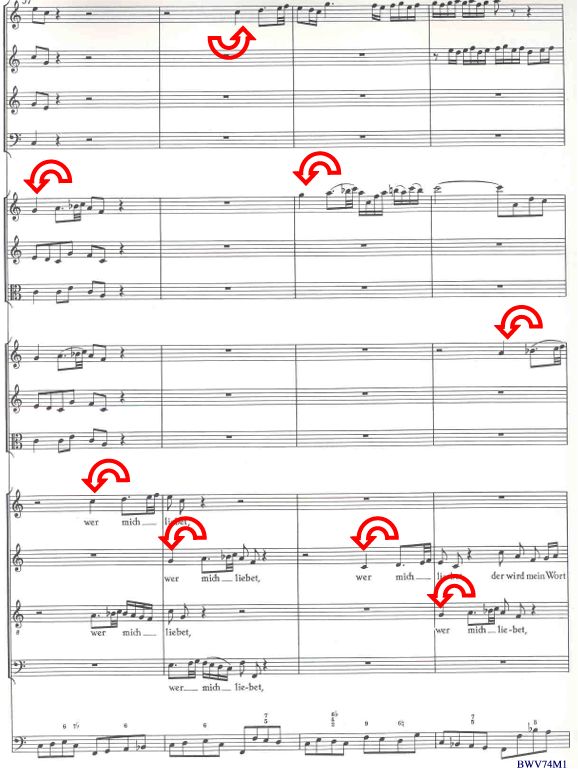
|
| |
|
Mvt. 2: Aria [Soprano] |
|
Mvt. 2 has some major transformation here in the middle of the mvt. Two examples are placed one on top of the other. The top example is from BWV 59, the original bass aria with ecstatic exclamations that must be accounted for. The bottom example shows the soprano aria with the changes apparently necessary so that the musical line 'runs more smoothly' with the words, as there is now no reason for the sharp exclamations. |
|
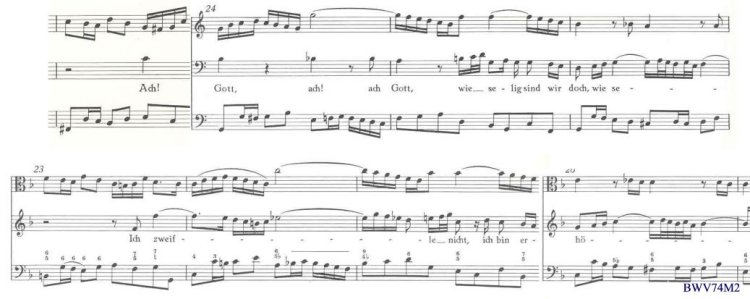
|
| |
|
Mvt. 4: Aria [Bass] |
|
On the word, "freuen" ("to be joyful"), Bach begins a long melisma with joyful stops (the rests are indicated), after which follows a long string of sixteenth notes. |
|
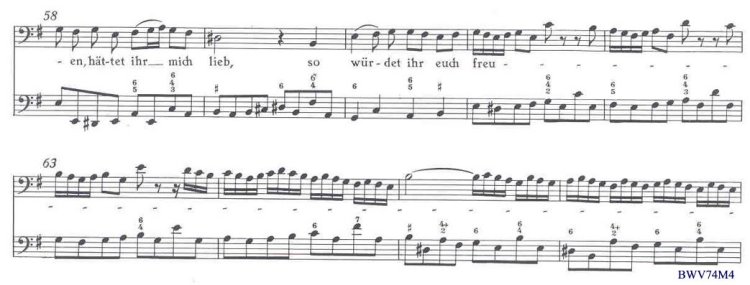
|
| |
|
Mvt. 5: Aria [Tenor] |
|
Just before the tenor voice enters for the first time, and at the end of the introductory instrumental passage, is a catchy syncopated motif as marked. |
|
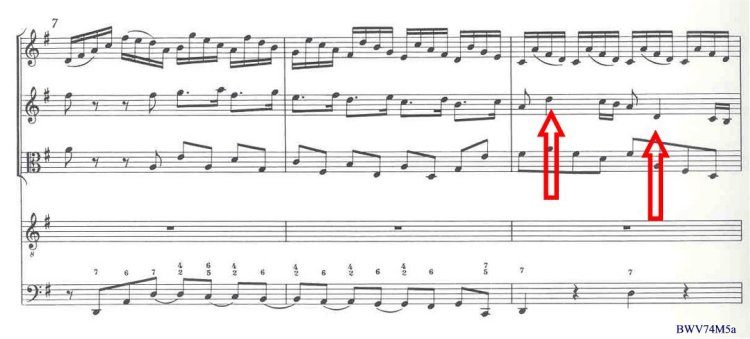
|
|
When the tenor sings, "Geht er gleich weg" ("If he (Christ) quickly leaves us") the voice is led upwards, but in the next phrase, "so kömmt er wieder" ("then he will quickly return") the movement is downwards to symbolize Christ's return to Earth. |
|
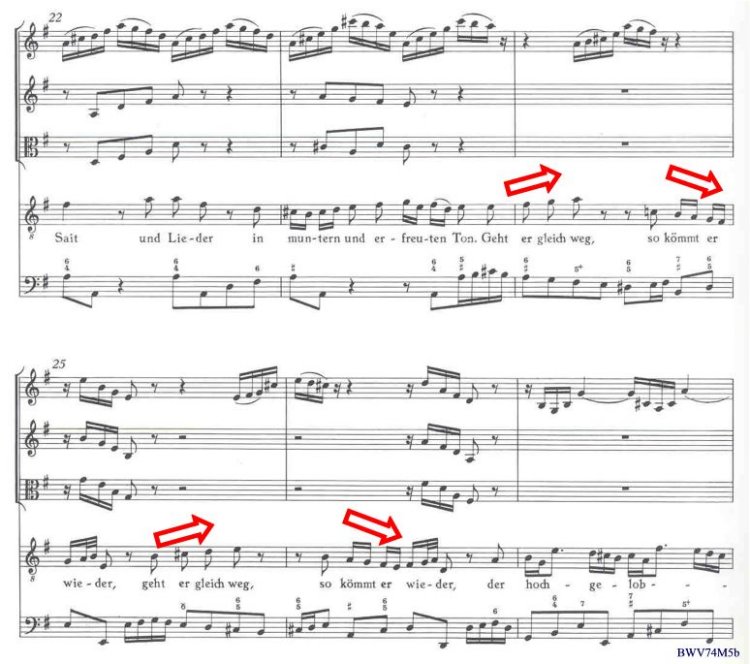
|
|
We have recently seen instances of "glauben" ("to believe") in other cantatas given a long, held note. This is just another example of a similar treatment in this aria. |
|
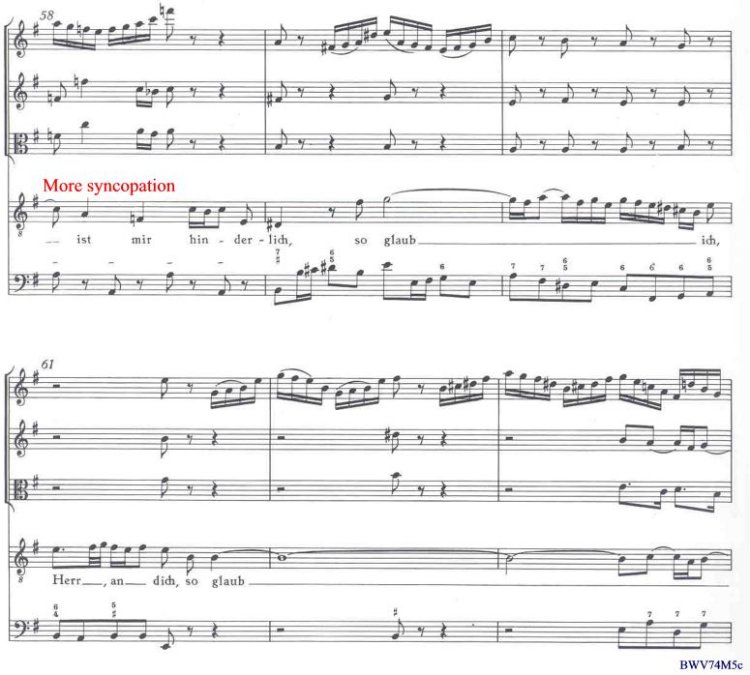
|
| |
|
Mvt. 7: Aria [Alto] |
|
On the words, "die höllischen Ketten" ("the chains of Hell"), Bach uses mainly quickly repeated notes with the solo violin playing the arpeggiated chords with 32nd notes. Any ideas what the connection might be here? |
|
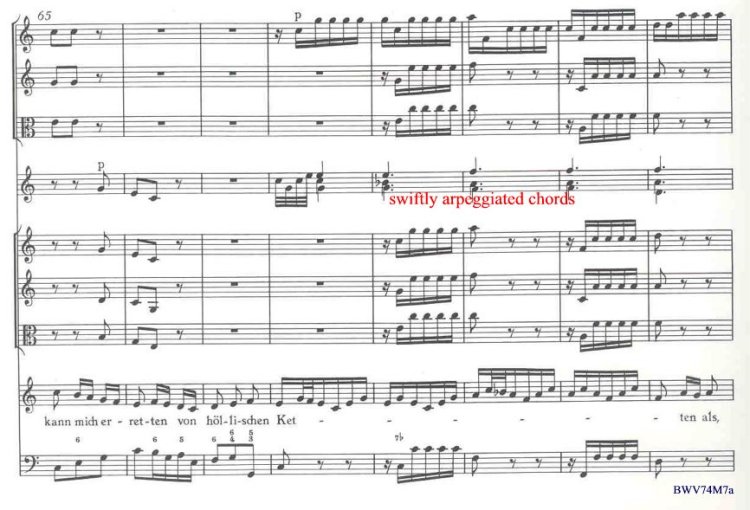
|
|
On the words, "Sterben" ("death") and "Erben" ("heirs") Bach has the strings play sudden, crashing chords, each instrument playing three or four strings at once. Notice that Bach adds no dynamic indications since the effect is startling enough without overdoing it. You can imagine what Nicholas or Gustav would do here. |
|
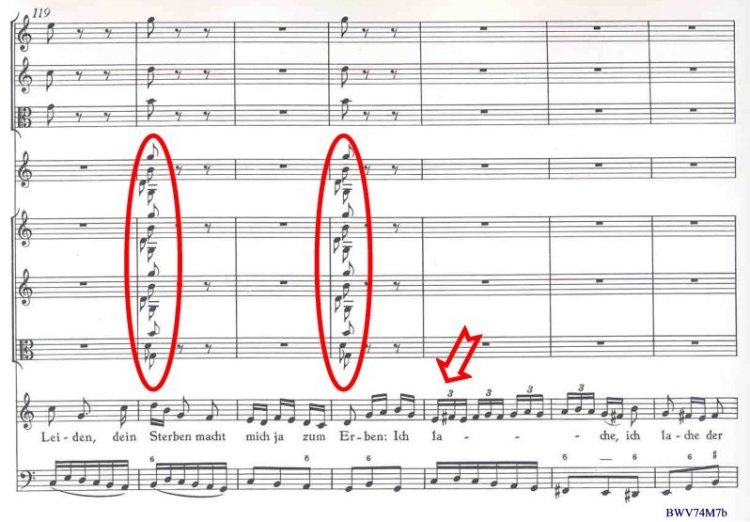
|
| |
|
All snippets from NBA I/13
Contributed by Thomas Braatz (June 9, 2001) |